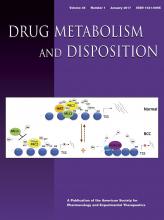Abstract
As a follow up to previous reviews, the aim of the present analysis was to systematically examine all drug metabolism, transport, pharmacokinetics (PK), and drug-drug interaction (DDI) data available in the 33 new drug applications (NDAs) approved by the Food and Drug Administration (FDA) in 2015, using the University of Washington Drug Interaction Database, and to highlight the significant findings. In vitro, a majority of the new molecular entities (NMEs) were found to be substrates or inhibitors/inducers of at least one drug metabolizing enzyme or transporter. In vivo, 95 clinical DDI studies displayed positive PK interactions, with an area under the curve (AUC) ratio ≥ 1.25 for inhibition or ≤ 0.8 for induction. When NMEs were considered as victim drugs, 21 NMEs had at least one positive clinical DDI, with three NMEs shown to be sensitive substrates of CYP3A (AUC ratio ≥ 5 when coadministered with strong inhibitors): cobimetinib, isavuconazole (the active metabolite of prodrug isavuconazonium sulfate), and ivabradine. As perpetrators, nine NMEs showed positive inhibition and three NMEs showed positive induction, with some of these interactions involving both enzymes and transporters. The most significant changes for inhibition and induction were observed with rolapitant, a moderate inhibitor of CYP2D6 and lumacaftor, a strong inducer of CYP3A. Physiologically based pharmacokinetics simulations and pharmacogenetics studies were used for six and eight NMEs, respectively, to inform dosing recommendations. The effects of hepatic or renal impairment on the drugs’ PK were also evaluated to support drug administration in these specific populations.
Footnotes
- Received September 1, 2016.
- Accepted November 2, 2016.
↵1 Current affiliation: Department of Pharmaceutics and Medicinal Chemistry, University of the Pacific, Stockton, CA.
↵
 This article has supplemental material available at dmd.aspetjournals.org.
This article has supplemental material available at dmd.aspetjournals.org.
- Copyright © 2016 by The American Society for Pharmacology and Experimental Therapeutics
DMD articles become freely available 12 months after publication, and remain freely available for 5 years.Non-open access articles that fall outside this five year window are available only to institutional subscribers and current ASPET members, or through the article purchase feature at the bottom of the page.
|







